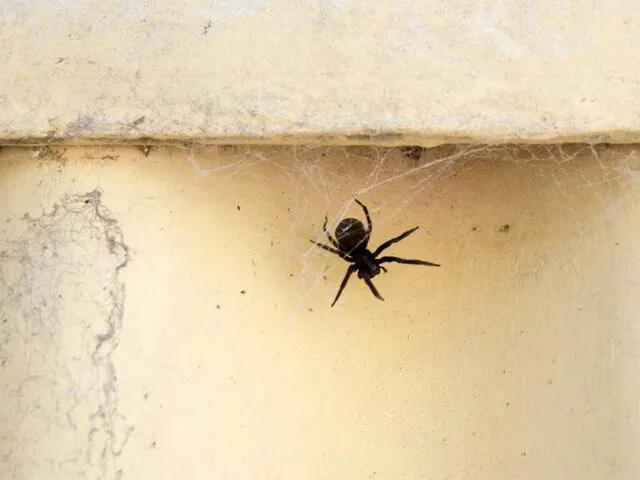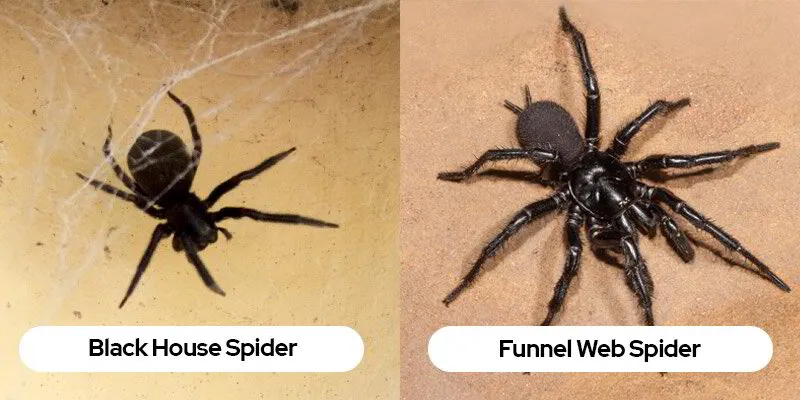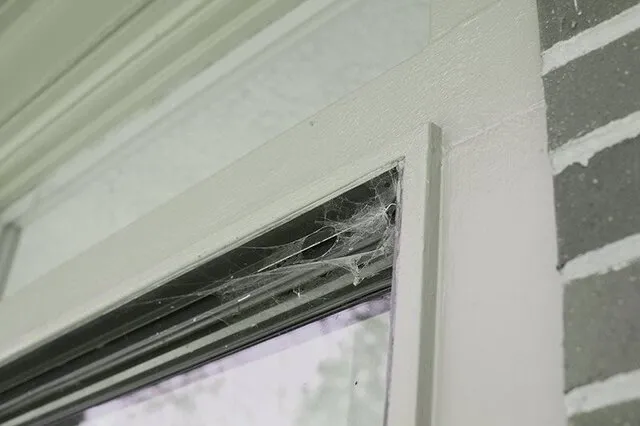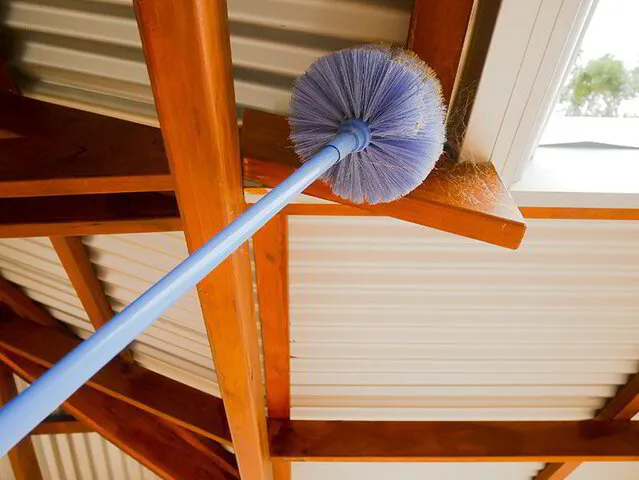Discover the Australian Black House Spider (Badumna insignis)
Welcome to our information page on the Australian Black House Spider. This spider has a scientific name of "Badumna Insignis". It is not uncommon to find this common black spider in your home. Check out our information below, we hope you find this helpful.
What does the Australian Black Spider look like?
The common Australian spider is mostly a charcoal or black colour though they can be dark brown to black colours. Their bodies may feature grey or brown shades on the abdomen, accentuated by distinctive white markings. Their legs present a blend of brown and black. Female Black Spiders grow up to 18mm in body length and have a leg span reaching 30mm, while their male counterparts are much smaller and leaner. The Australian Black Spider is sometimes confused with the Funnel-Web Spider.
Black House Spiders live around your home - look for messy spider webs!
Australian Black Spiders typically make their homes in the protected exterior nooks of wooden or brick constructed sections of your premises. Their webs are thick, lacy, and often full of debris. You will also find Black House Spiders weaving their intricate webs on tree trunks (rough-barked trees), logs, or under rocks, utilizing any crevice that offers refuge. Their preferred location around your home includes around window corners, where their webs extend outward. Additionally, they inhabit cracks in fibro, old corrugated iron, and vents.
In their natural habitat Australian Black Spiders strategically position themselves by fissures, gouges, or boreholes in tree trunks, areas frequented by wood-boring insects like termites. Here they will ambush prey like butterflies, bees, or ants that are attracted to the sap of the trees. These unsuspecting insects often get caught in the spider's delicate web, and end up becoming its prey.
Around the home, these spiders shift their hunting focus to indoor pests such as moths, beetles, and termites, which are commonly lured to the household lights or lamps during the evening hours.
Web-Making Marvels
These spiders are known for their elaborate web designs, creating dense, funnel-shaped webs as traps for their prey. The webs of Black House Spiders are composed of a thick silk matrix and are cleverly constructed to catch insects. They trap their prey primarily through physical entrapment rather than stickiness of the web.
These spiders exhibit a strong fidelity to their chosen home, and don't often change their web's location. This is what makes their webs accumulate a lot of debris over time with the web often becoming cluttered with small objects and dust particles. At night, the female spider busies herself with web maintenance - mending any damages and expanding her silken structure, and frequently layering fresh silk on top of the old web.
Behaviour and Reproduction of the Australian Black Spider
The male Australian Black Spider often journeys outside their webs to find females, signalling their intentions by rhythmically plucking the strands of the female's web. Post-mating, unlike in some species, males often remain with the female for a duration, engaging in multiple mating sessions.
The female spider typically remains within her web, rarely moving outside the web unless absolutely necessary.
Interaction with Other Spider Species
The Australian Black House Spider is mostly preyed upon by White-Tailed spiders. They actually play a significant role in the ecological food chain by eating other spiders! By managing black spiders around your home, you can indirectly deter white-tailed spiders by minimising their food source.
Are Australian Black House Spiders Poisonous?
While not highly venomous, a Black House Spider bite can painful and cause local swelling. A bite can induce symptoms such as swelling, nausea, and in some cases, vomiting. It's vital to administer proper first aid and seek medical assistance if symptoms get worse.
How can I prevent this spider from my home?
To deter black house spiders from taking up residence around your home, try applying a broad-spectrum insecticide along the home's perimeter. Pay close attention to areas like window frames, doorways, under eaves, and in any vents, as these are preferred web-building spots. This type treatment can keep spiders at bay for several months. Reapply after heavy rain or after a couple of months.
What To Do If Bitten by a Black House Spider?
- Remain calm, try to relax and sit down
- Clean the bite area with water and a disinfectant safe for skin
- Apply an ice pack to minimise swelling to the area
- While this is a common species, if possible, catch the spider or photograph it for identification purposes. Australia hosts a diversity of spider species, so it is crucial to accurately identify them, especially if you have been bitten.
- Seek professional medical advice if symptoms persist or become worse.
Is a Black House Spider the same as a Funnel Web Spider?
No, they are distinctly different species, varying in behaviour and venom potency, despite their similar dark hues. See the image above on this page.
Treating the Australian Black House Spider
Should you find Australian Black House Spiders have already established themselves outside your property, it's important to directly treat both the webs and the spiders' secluded nooks. After treatment, we advise to let the webs remain in position for a minimum of 24 hours before removing them. To preserve the effectiveness of the insecticide, avoid water and detergent, or a garden hose to clean away the webs, as this will not only remove the web but also removes the pest control spray.
The Australian Black House Spider is a fascinating creature with distinct behaviours and characteristics. It's not uncommon to find this spider around your Brisbane home or place of business.
For professional help in Brisbane, we can treat your home or business for the Australian Black Spider
If you require treatment for Spiders, please reach out to us for a quote or make a booking request online.





